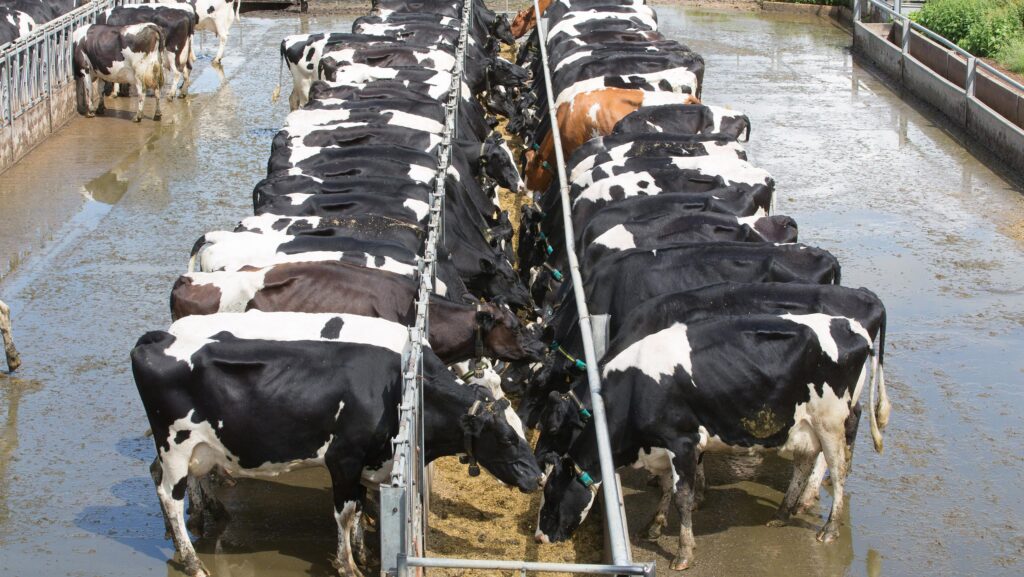Big cows are a drain on dairy feed bills and the environment
 © Tim Scrivener
© Tim Scrivener UK dairy farmers are milking their best-ever Holstein cows, having improved all health and production traits through breeding selection.
However, there is an “unfavourable trend in maintenance” which has become a problem environmentally, according to SRUC professor of livestock informatics Mike Coffey.
See also: Why big cows are inefficient and how to breed smaller stock
“Big cows are bad. Bigger cows means we now have an equivalent of 60,000t of cow liveweight to feed each day in the UK – about 90,000 mature Holsteins.
“For an average herd of 200 cows, that is roughly 10 extra cows to feed every day,” he said.
Because most dairy farmers do not weigh their cows, there is no national cow weight data.
As a result, genetic predictions for cow size are based on cull cow carcass weights – without a killing-out percentage or pre-slaughter weights.
Mike said there could be a 250kg difference in weight between cull cows as daughters of different sires.
“Size is one of the most heritable traits and easily reduced through selection, but it will take some years to reverse because bulls are already in the system,” he added.
Breeding indexes
Nonetheless, dairy farmers already have enough tools and breeding indexes available to improve herd sustainability. It is not necessary to wait for direct measures of methane.
“They will allow refinement, but are not a barrier to starting,” he said.
Fertility measures, selecting for improved feed efficiency, and cow/calf survival all help, while breeders using the EnviroCow genetic index are reducing their herd’s carbon dioxide equivalent for every kilogram of product produced.
Mike also pointed out that if every dairy farm ensured that all its heifers calved at 24 months, this could save 106,675t of carbon dioxide, or 4,267t of methane, by removing those outliers calving at 28-48 months.
Prof Mike Coffey was speaking at the British Cattle Breeders Conference dairy day.
